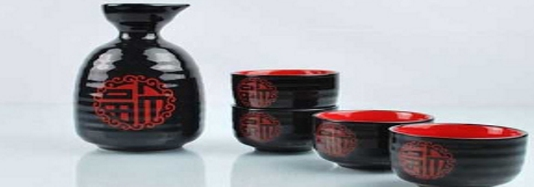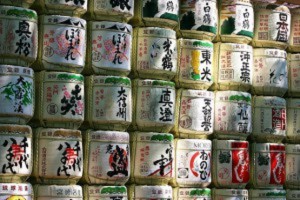
酒の発生の歴史
Sake is translated from the Japanese as an alcoholic beverage, any alcoholic beverage, but in the whole world so is called one concrete type of drink–rice wine. However, calling rice wine sake is also wrong, as sake is made in the result of kneading of rice, which is more characteristic of making beer than wine. Besides, in different parts of Japan, there are different means of making sake: for example, formerly in Southern Kyoto, sake was distilled from potato and in Okinawa, it was distilled from sugar beet. Nowadays sake is mainly made from long sorts of rice.
There are two theories of the origin of sake. According to the first theory the production of sake has began in China in the area of the river Yangtze in 4800 B. C. and afterwards it has penetrated into Japan. According to the second theory, sake has originated in Japan in the 3rd century. The first sake was called “kuchikami no sake”-“sake for tasting” and it was produced in the following way: people chewed together rice, chestnut, millet and acorn and spat the received mass into a common bowl. The enzymes present in the spit contributed to the origination of sugar. They added fresh rice into the mass obtained and left it for natural kneading. This type of sake contained little alcohol and was used in the cuisine as a watery porridge.
 Centuries past there was adopted a new technology of making sake kojikin (moldy mushrooms), due to which the rice starch converted into sugar. In such a way, there are prepared miso and soy sauce. In case of adding rice to kojikin, it turned into rice malt and in case of adding yeast (shubo)-into ethanol, which obviously increased the level of alcohol in the beverage.
Centuries past there was adopted a new technology of making sake kojikin (moldy mushrooms), due to which the rice starch converted into sugar. In such a way, there are prepared miso and soy sauce. In case of adding rice to kojikin, it turned into rice malt and in case of adding yeast (shubo)-into ethanol, which obviously increased the level of alcohol in the beverage.
Further achievements in the production of sake belong to the Chinese, who succeeded in creating a more qualified product. In the result, sake became so popular all over the world that in Kyoto in the imperial palace there was built a sake brewery. In the Heyan era, the third stage was added into the production of sake in the result of which the amount of alcohol increased and the pickling of sake decreased.
During the following 500 years, the methods of making sake improved and in the result of it, sake was also improved. They also started to pasteurize sake: during summer, sour sake was poured into the barn and was heated. However, the pasteurized sake had an unpleasant taste, which the Japanese didn’t like (the technology of pasteurization and food preservation will be discovered by Luis Paster after 500 years).
During the Meiji Restoration numerous sake breweries were opened all over Japan. Around 30 000 sake breweries were opened within a year. Many of these sake breweries function until now. From the 20th century, the government is also supporting the development of sake production. In 1907 there was held the first sake sampling and the first competition of sake producers.
The beginning of the World War Second struck a great blow on the production of sake, as the country sent the whole rice to the army. After the war the production of sake improved but there appeared European beverages–beer, wine and so on, which decreased the demand of sake. However strange it is, the quality of sake essentially improved. Nowadays the consumption of sake is decreasing in Japan. Howsoever it increases in other parts of the world it will hardly save the sake breweries functioning in the world. Their number is about 1500 now.
https://nipponnitsuite.wordpress.com/2015/03/13/sake/から取られた材料
translated from Armenian into English by M.Vardanyan











